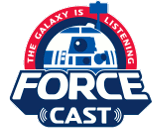by Christopher Leidenfrost (FilmJedi)
Most filmmakers working on Star Wars fan films have basic concepts of what they want to see in their film--how they want their film to flow. The director and/or cinematographer may have specific scenes they want to work a certain way. When we watch any movie, there are certain patterns that apply the shots.
There are three basic types of shots. The wide shot, which is pulled back from the action, often used to show scale. The medium shot, which is framed around the main action. And the close up, a shot framed around a specific object to stress its importance. When shooting close up of actors, it may be just certain aspects like the eyes or hands. These shots can be used to express different feelings, but most importantly to tell the story.
When shooting a sequence, the best way to go about it is to shoot the ENTIRE sequence several times from various angles. For example, when you are shooting a conversation between two characters, shoot the sequence in front of each of the speakers, then perhaps again with the back of the opposing speaker's head in the foreground of the shot. Then pull back and shoot the scene again from any side shots you want. Then if there are any specific shots you wanted that you did not get, shoot them. You may think this sounds like a lot of footage, but doing this increases the ease of editing the sequence--which is why the technique is used in most television production
today.
It is also good to remember most shots of dialogue are framed around the upper body, and sometimes even just the head or face of the person speaking. If the dialogue has certain significance to something besides the speaker, such as effecting other characters or items in a scene, the shot often cuts to the thing being affected. If there is a conversation, the shots usually cut back and forth between the faces of the speakers.
One of the most important thing to remember when shooting is to never have your actors make eye contact with the camera. This is extremely noticeable and detracts from the film greatly, unless you want the character to be looking at the audience. It is sometimes used in comedy films when a character will interrupt a scene to yell at "the loud guy in the second row". (Which may be useful in some applications, but not really in a traditional film from a third person point of view)
When you go to edit a sequence, it is important to remember that fluidity and continuity are the secrets to achieving realism. Shooting the entire sequence rather than just single shots will allow you to cut at will and more or less take away the limits of constricting shots, especially if you are having people help you by editing. (They will be most appreciative.) For individual scenes, the editing should be strictly straight cuts--from one shot to the next with no transitory effects. Simple transitions should only be used for a change in time or place, as they will severely hurt the continuity of the action. And even when the transitions are used, try not to use "flashy" spins or fly-ins, but rather simple cross dissolves, wipes or iris effects. These three are the ONLY transitions used in any Star Wars film.
I hope that these tips will prove helpful when you finally sit down to edit your fan film, not an easy challenge even for a seasoned editor. Just remember to tell the story, that's the whole purpose of the film. Good luck and happy shooting-FilmJedi

